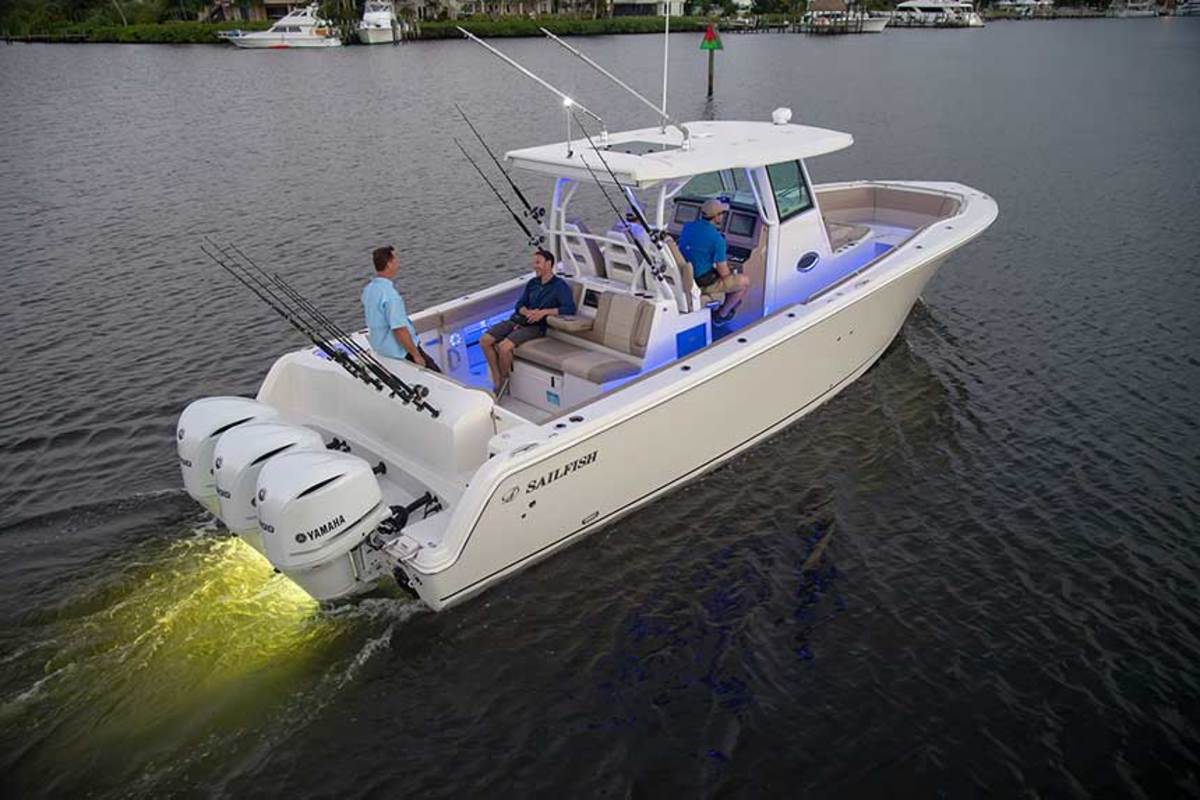Protecting Your Outboard From Corrosion
Easy to Follow Steps to Keep Your Outboard Running Smoothly
Raritan Engineering Company your marine hose specialists would like to share with you these topics we thought would be of interest to you this month regarding protecting your outboard from corrosion.
Your outboard continuously draws water in, circulates it around high-heat components to cool them, and then discharges the water. We recommend flushing after use in salty, muddy or contaminated water because deposits can cling to inside passages and break down those surfaces at a molecular level. Plus, flushing helps to prevent clogs that could impede the flow of coolant water. The flushing port on Mercury outboards makes this easy. With the engine off, trim it to the vertical position, attach a freshwater hose, open the spigot halfway and flush for 15 minutes.
I flush my outboard with Star Brite Salt Off after a day on the water. It’s cheap insurance. I do this right away, while the engine’s still hot. Your marine hose experts talk about how the thermostat needs to be open to ensure Salt Off flows through the engine. On the trailer, I run the engine until it reaches normal operating temperature. Then, I shut down. I attach one end of the Salt Off applicator to a garden hose and the other end to my motor’s flushing unit. I fill the applicator cup with Salt Off, turn on the water and allow it to run. When I see only clear water in the applicator cup, I know the engine is flushed.
Anodes
Aside from bubbling paint, the first thing to check are the anodes — commonly called zincs even when made of other materials — which are critical to preventing corrosion in underwater metals, and your most important line of defense. You don't need to know the chemistry that causes corrosion, but a simple explanation can help understand and avoid it. When two different kinds of metal are in contact with each other (say, an aluminum outdrive and a stainless-steel propeller) and immersed in saltwater (and to a lesser extent, fresh water), a weak battery is formed between the two.
Take a look at all of our marine products choices here at Raritan Engineering. We are your #1 choice for marine sanitation supplies.
Shore Power
You might not think that a boat's power connection could have anything to do with a corroding outdrive, but it can. Aside from missing anodes, it's probably the most common cause of severe corrosion. Boats plugged into shore power share the green ground wire with every other plugged-in boat in the marina. Your marine hose suppliers talk about how the ground wire is critical to a safe boat because it carries off dangerous current from a fault in the shore power system. But because the shore power ground wire is also connected to the DC ground system (which is critical to preventing shocks to swimmers in the area), it extends to a boat's bonded underwater metals — including the outdrive.
Stray Current
Another way an outdrive can be destroyed by corrosion is through a voltage leak in a DC system. This problem is less common and typically caused by a fault in a boat's 12-volt DC system. For example, if a bilge pump sitting in saltwater were to have a break in the DC wire's insulation, current could destroy metal fittings in the bilge. Avoiding stray current corrosion means making sure that there are no wires in the bilge (all wires should be supported above the level of expected bilge water), except the wire to the bilge pump.
So don't forget these easy to follow methods of keeping your outboard running smoothly. 1) The first thing to check are the anodes which are critical to preventing corrosion in underwater metals; 2) check your boat's power connection; and 3) make sure that you don't have a voltage leak in the DC system.
Sea Lion Board Fishing Vessel Unexpectedly!
These fishermen pull in a load of fish in the North Pacific Ocean; however, they reel in a load of more than just fish. As they began to drop the fish from the net, they notice something unusual.
A hungry sea lion was trapped in the net along with their catch. It wriggles its way out. Confused and out of sorts, he takes a moment to look around. This sea lion is met by curious onlookers and a curious dog. It takes a moment to get its bearings.
The fisherman spray water at the sea lion to encourage it to retreat down the trawler, which lead to the ocean. Finally, it slides down and back into the sea.
For more than fifty years, Raritan has been meeting our customers’ needs for outstanding service and product reliability establishing ourselves as “the most dependable name on the water.” Our customers continue to be our focus, and the primary source of the ideas for our new marine products and product enhancements. The median length of service for Raritan employees is about twenty years, an unusual number in the fast-changing world we live and work in. It is a measure of the dedication of the men and women who design, manufacture, distribute and support Raritan’s marine products. Visit our website today for the best quality marine hoses in the marine sanitation industry.
For more information,visit https://raritaneng.com/. For futher inquiries and assistance, contact Kimberly Carrell at 856-825-4900 ext.202 or send emails at sales@raritaneng.comCompany Name: Raritan Engineering
Contact Person: Kimberly Carrell
Email: sales@raritaneng.com
Phone: 856-825-4900
Address: 530 Orange St.
City: Millville, NJ 08332
Website: https://raritaneng.com/
sale
via Combat Corrosion
via How To Prevent Outdrive Corrosion
via Sea Lion Board Fishing Vessel Unexpectedly!
s@raritaneng.com
Comments
Post a Comment